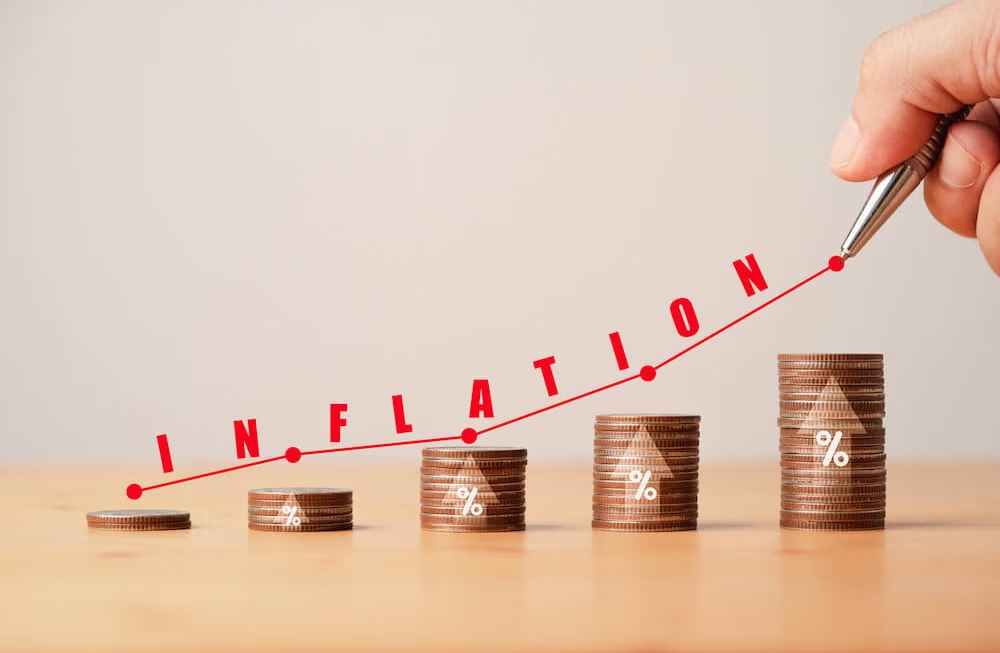Achieving financial freedom is a goal that many people aspire to, but few know how to achieve. Financial freedom is often defined as the state of having enough income and assets to support your lifestyle without relying on traditional employment or a paycheck. It means having the ability to live life on your own terms, without the stress of financial burdens dictating your decisions. The path to financial freedom may seem daunting, but by breaking it down into clear and actionable steps, you can take control of your financial future and move closer to the life you’ve always dreamed of.
In this article, we’ll explore the key steps to achieving financial freedom, answer frequently asked questions (FAQs), and provide some important takeaways to guide you on your journey.
Key Takeaways:
- Financial freedom is about having enough assets and income to live without relying on traditional employment.
- Understanding your financial situation is crucial to starting your journey.
- Budgeting, eliminating debt, and building an emergency fund are foundational steps.
- Investing for the future and increasing your income accelerate your path to financial independence.
- Stay disciplined, educated, and focused on your goals to achieve lasting financial freedom.
Step 1: Understand Your Current Financial Situation
Before you can begin working toward financial freedom, it’s crucial to understand where you currently stand. Many people make the mistake of diving straight into investing or budgeting without assessing their financial situation first.
How to Assess Your Financial Situation:
- Track Your Income and Expenses: Start by reviewing your monthly income and expenses. Write down all sources of income and categorize your expenses (housing, food, transportation, entertainment, etc.). This will give you a clear picture of how much money is coming in and going out each month.
- Calculate Your Net Worth: Your net worth is the difference between your assets (what you own) and liabilities (what you owe). Subtract your debts (mortgage, loans, credit card balances) from your assets (savings, property, investments) to determine your current financial health.
- Identify Financial Goals: Understand why you want financial freedom. Is it for early retirement? Is it to pay off debt? Or is it to have more control over your spending and savings? Knowing your goals will help you stay motivated.
Why is this step important?
Knowing where you stand financially gives you a baseline. It helps you track progress, make smarter decisions, and avoid common pitfalls along the way. This self-awareness is the first step toward taking control of your finances.
Step 2: Create a Budget and Stick to It
Creating and adhering to a budget is one of the most effective ways to gain control of your finances. A budget acts as a blueprint for your financial life, ensuring that you’re making deliberate decisions about how to spend, save, and invest.
How to Create a Budget:
- List Your Income and Expenses: Start with your total monthly income and list your fixed expenses (rent, utilities, insurance, etc.) and variable expenses (groceries, entertainment, etc.).
- Set Realistic Financial Goals: Allocate a portion of your income toward savings and investments. Even small amounts add up over time.
- Use the 50/30/20 Rule: This rule suggests allocating 50% of your income to necessities, 30% to discretionary spending, and 20% to savings and debt repayment.
- Cut Unnecessary Expenses: Review your variable expenses and find areas where you can reduce spending. Cancel subscriptions, reduce dining out, or find cheaper alternatives.
- Track Your Progress: Regularly check your spending habits and adjust your budget as needed. This helps you stay on track and make sure you’re living within your means.
Why is this step important?
A budget forces you to make conscious financial decisions. It ensures that you don’t overspend, allowing you to save and invest more aggressively in the future. Without a budget, it’s easy to lose track of your goals and end up wasting money on things that don’t move you closer to financial freedom.
Step 3: Eliminate Debt
Debt is one of the biggest obstacles to achieving financial freedom. Whether it’s credit card debt, student loans, or a mortgage, carrying high-interest debt can drag down your financial health.
How to Eliminate Debt:
- List Your Debts: Write down all of your debts, including the balances, interest rates, and minimum monthly payments. This will give you a clearer picture of how much you owe.
- Prioritize High-Interest Debt: Focus on paying off high-interest debts (such as credit cards) first, since they are the most expensive. This is known as the debt avalanche method.
- Use the Debt Snowball Method: Alternatively, if you find it more motivating to see quick progress, use the debt snowball method. Pay off the smallest debts first, and as you eliminate them, apply the money you were using to those debts toward the next one.
- Avoid Accumulating New Debt: Cut up or lock away your credit cards and avoid taking on new loans until your current debt is under control.
- Consider Refinancing or Consolidation: If you’re struggling with high-interest loans, consider refinancing or consolidating your debt to lower your monthly payments or interest rates.
Why is this step important?
Eliminating debt frees up more of your income to invest and save for the future. High-interest debt especially can become a financial anchor, preventing you from building wealth and achieving financial independence.
Step 4: Build an Emergency Fund
An emergency fund is a crucial step in achieving financial freedom. It acts as a financial cushion in case of unexpected events such as a job loss, medical emergency, or major home repair. Without an emergency fund, you may be forced to rely on credit cards or loans, setting back your progress toward financial freedom.
How to Build an Emergency Fund:
- Set a Savings Target: Aim to save at least 3 to 6 months’ worth of living expenses. This amount will give you the financial cushion to cover unexpected costs without relying on credit.
- Automate Savings: Set up automatic transfers from your checking account to your emergency savings account. This ensures that you’re saving consistently and don’t have to think about it.
- Cut Back on Non-Essential Spending: If you’re having trouble saving for your emergency fund, cut back on discretionary expenses until you’ve built a sufficient cushion.
- Use a Separate Account: Keep your emergency fund in a separate, easily accessible account, like a high-yield savings account, so that you’re not tempted to dip into it for non-emergency expenses.
Why is this step important?
An emergency fund prevents you from derailing your financial progress when unexpected costs arise. It offers peace of mind, knowing that you have financial security in place, and keeps you from going into debt during tough times.
Step 5: Invest for the Future
Investing is a key component of building long-term wealth and achieving financial freedom. While saving money is important, it’s not enough on its own. To truly achieve financial freedom, you need your money to grow over time.
How to Invest for the Future:
- Start Early: The earlier you start investing, the more you benefit from compound interest. Even if you start with small amounts, time will work in your favor.
- Diversify Your Investments: Invest in a variety of assets, including stocks, bonds, real estate, and mutual funds. Diversification helps spread risk and increases your chances of consistent returns.
- Consider Tax-Advantaged Accounts: Take advantage of retirement accounts such as 401(k)s or IRAs, which offer tax benefits that can accelerate your wealth-building.
- Educate Yourself: Learn about the different types of investments, risk tolerance, and market trends. Understanding the basics of investing will help you make smarter decisions.
- Stay the Course: Investing is a long-term strategy. Don’t be swayed by short-term market fluctuations, and resist the urge to make emotional decisions based on market volatility.
Why is this step important?
Investing allows your money to work for you, building wealth over time and helping you reach financial independence faster. Without investing, you may find it difficult to keep up with inflation and achieve your financial goals.
Step 6: Increase Your Income
Increasing your income is another key step in achieving financial freedom. While cutting expenses and saving are important, boosting your income can significantly speed up your progress.
How to Increase Your Income:
- Ask for a Raise: If you’re employed, consider negotiating your salary or asking for a raise. Demonstrate your value to your employer and justify the increase based on your contributions.
- Start a Side Hustle: Many people achieve financial freedom by taking on side jobs or freelance work. Whether it’s freelance writing, tutoring, consulting, or driving for rideshare services, a side hustle can provide a steady stream of additional income.
- Invest in Your Skills: Acquiring new skills or certifications can increase your earning potential and open up new career opportunities. Consider taking online courses or workshops to enhance your skill set.
- Create Passive Income Streams: Invest in assets that generate passive income, such as rental properties, dividend-paying stocks, or online businesses. Passive income allows you to earn money without active effort, accelerating your financial freedom.
Why is this step important?
Increasing your income gives you more money to invest, save, and pay off debt. It provides more financial flexibility and allows you to achieve your goals faster.
Conclusion
Achieving financial freedom is a journey that requires patience, discipline, and smart decision-making. By following these key steps—understanding your finances, budgeting, eliminating debt, building an emergency fund, investing, and increasing your income—you’ll be on the path to achieving financial independence and living life on your own terms.
Financial freedom isn’t just about having money—it’s about having control. It’s about making decisions that align with your goals and building a future that brings peace of mind. While the journey may take time and effort, the rewards are well worth it.
FAQs
1. How long does it take to achieve financial freedom?
The timeline for achieving financial freedom depends on various factors such as your income, expenses, debt, and investment returns. With disciplined saving, smart investing, and cutting unnecessary expenses, it can take anywhere from a few years to several decades.
2. Is financial freedom only about having a lot of money?
No, financial freedom is about having control over your financial life and not being dependent on a paycheck. It’s more about making decisions that align with your values and goals, rather than just accumulating wealth.
3. What’s the best way to start investing?
Start by educating yourself about investment options, such as stocks, bonds, and mutual funds. Begin with low-cost index funds or exchange-traded funds (ETFs) if you’re new to investing. Consider speaking with a financial advisor for personalized advice.
4. Can I achieve financial freedom while paying off debt?
Yes, but it may take longer. Paying off high-interest debt should be a priority before investing, as it will prevent you from losing money to interest charges.
5. Do I need to be a financial expert to achieve financial freedom?
No. While financial knowledge is helpful, you don’t need to be an expert. Basic financial literacy, discipline in budgeting, and a commitment to investing wisely can help you achieve your goals.
6. What happens if I lose my job during my journey to financial freedom?
Having an emergency fund (3-6 months of expenses) can help you weather such a situation. In addition, diversifying your income sources (side hustles, investments) can provide more stability.
7. How do I know if I’m financially ready for retirement?
Financial readiness for retirement means having enough assets and income sources to cover your living expenses without relying on active work. It’s often helpful to work with a financial advisor to calculate how much you need to retire comfortably.




